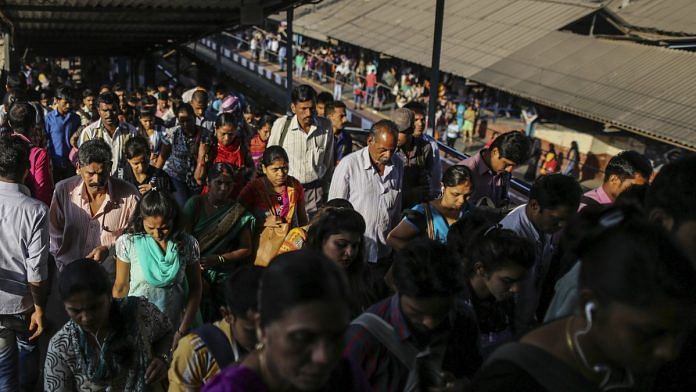In his Independence Day address to the nation, the Prime Minister drew attention to the ‘population explosion’ in this country. He expressed concern about the challenges posed by this ‘exploding’ population growth, suggested that those who keep the size of their families small are practising a form of patriotism, and that others should follow suit.
Is the discussion of population explosion relevant for India today? India’s population has indeed reached 1.37 billion, according to the recently released United Nations World Population Prospects, and it will continue to increase over upcoming decades, even if all Indian families choose to have just two children, because of the sheer numbers of the population entering into the reproductive ages. However, we must recognise India’s significant declines in fertility.
Our total fertility rate (TFR), the average number of children that would be born to a woman over her lifetime, is 2.2 and has reached replacement level (2.1), that is, the level of fertility at which a population exactly replaces itself from one generation to the next, in 17 of 28 states and 8 of 9 Union Territories (UT). This means that couples in most parts of India have just two children. And in the remaining states and one Union Territory (Dadra and Nagar Haveli), the pace of the decline over the last decade has been significant in most areas, and across all social groups, and will likely reach replacement levels in the next two decades. The wanted total fertility rate in India, that is, the number of children a couple wants or wanted over the course of their married life is just 1.8, well below replacement level in all but four states and not a single UT*.
Also read: Does Modi’s population control call signal India unable to leverage demographic dividend?
Rather than our patriotic duty being defined by the number of children we bear, the narrative must shift to enabling all couples to achieve the number of children they want. One in ten Indian couples wants to delay the next pregnancy but fails to practise a method of contraception, because methods of their choice are inaccessible, they don’t know about how to use these methods, or the system does not support them to overcome family objections and other obstacles. As a result, the unmet need for family planning is widespread, especially among the young, the population most likely to shape the future course of India’s fertility. Among them, more than one in five (22 percent) wish to postpone pregnancy but don’t have the information, means or self-efficacy to do so*. Equally, for those who have an unintended pregnancy, the right to seek a safe abortion is effectively constrained by limited awareness of its legal status and the paucity of facilities and trained providers.
Our patriotic duty is also to ensure adherence to our enlightened laws and policies. Despite the Prevention of Child Marriage Act (PCMA), for example, more than one in four girls marry in childhood, and many without a say in when or whom they will marry. Both early marriage and the early childbearing that ensues are violations of girls’ rights, denying them the very opportunities–education, work, health–that will enable them to space their pregnancies.
Our patriotic duty is also to ensure that all children attain at least a secondary school education. Yet the NFHS-4 reports that of those aged 20-24, just 60 percent of males and 52 percent of females had completed Class 10, and ASER reports have repeatedly shown mediocre learning outcomes. We have steadfastly denied boys and girls the right to grow into adulthood fully informed about pregnancy and how to prevent unintended pregnancy. The provision of comprehensive sexuality education remains taboo in many settings–the Population Council’s UDAYA study (Bihar and Uttar Pradesh), for example, notes that just 19 percent of girls and 8 percent of boys had ever received sex education. As a result, many enter adulthood and marriage unaware of even the basics of how pregnancy happens–many do not know that pregnancy can occur the first time a girl has sexual relations, or that a missed period may be a sign of pregnancy. Neither teachers nor health care providers are comfortable about providing this information to the young.
Rather than the explosion narrative, India needs to rededicate itself to the promotion of rights. The health system must be reoriented and providers re-trained and sensitised into offering quality services that respect people’s right to choose, and enable them to meet their childbearing goals. The education system must be reoriented to take responsibility to ensure that the young graduate from school is equipped with information and skills necessary to prevent unwanted pregnancy and ensure good reproductive health. Finally, contextual barriers must be overcome.
Women and girls must be empowered to make decisions about their own life, including when and how many children to have. Persisting patriarchal community attitudes about male entitlement that deny women and girls the opportunity to access quality education, livelihood opportunities, protection from violence, and a say in their own life must be overcome.
Also read: Growth pangs, jobs crisis seen to be behind Modi’s call for population control
Promoting reproductive rights will ensure that couples have the number of children they want, and make informed choices about meeting their reproductive goals. At the same time, it will meet India’s population stabilisation goals. All without resorting to the language of explosion and the threat of coercion that this term implies.
*National Family Health Survey (NFHS-4), IIPS and ICF, 2017.
The author is the director at Aksha Centre for Equity and Wellbeing. She is a demographer and social scientist whose work has focused on young people’s health and development.
This article was originally published on India Development Review and can be viewed here.







India should follow China for the next twenty years, one child policy.